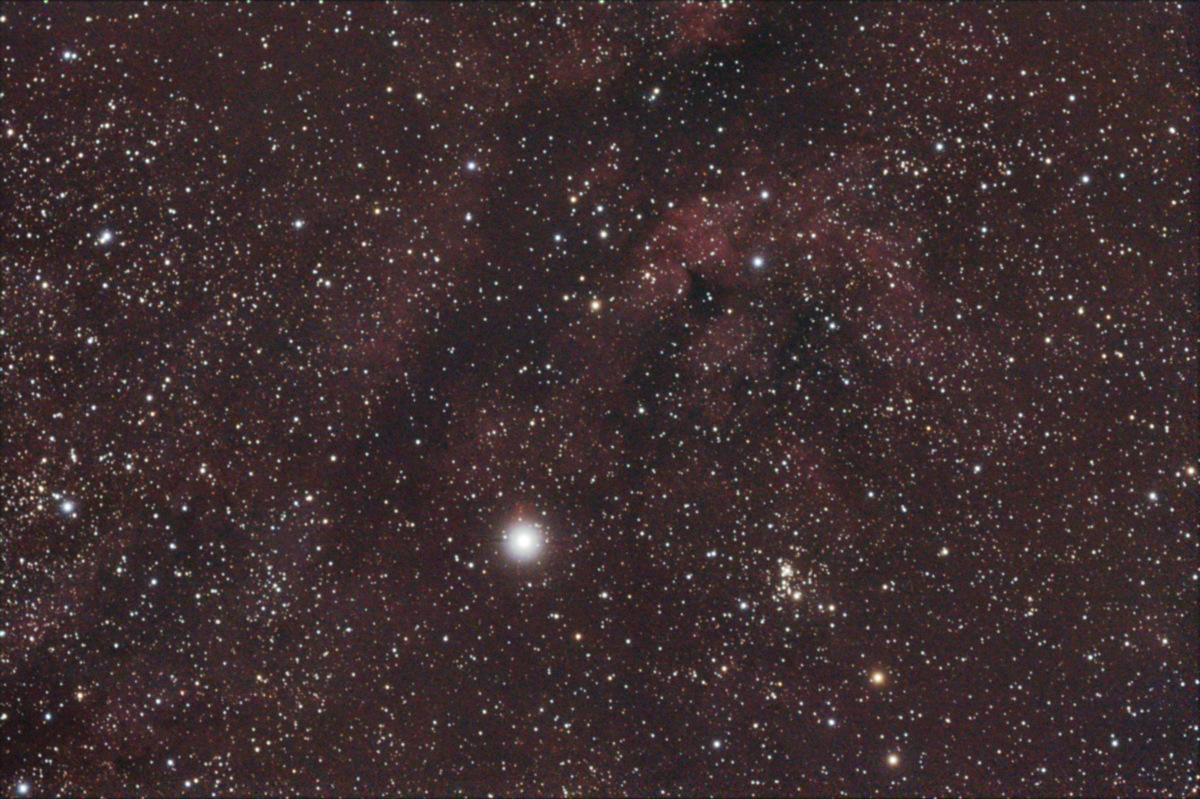SADR (Gamma Cygni). Pronounced more like “sudder” or “sadder,” the star itself is nowhere near as obscure as its proper name. Mid-second magnitude (2.20) Sadr is the Gamma star of the constellation Cygnus, the Swan, and lies prominently at the center of Cygnus’s famed asterism, the Northern Cross, at the crossing point of the staff and crossbar. The name, however, refers to the great ancient celestial bird, and comes from an Arabic phrase that means “the hen’s breast.” Sadr lies in a magnificent portion of the Milky Way as it runs along Cygnus’ long axis. It is at the northern end of the famed Great Rift, a dark lane that appears to divide the Milky Way — the disk of our Galaxy — in two and extends down through Sagittarius and Scorpius. The Rift actually consists of a huge complex of fairly nearby dust clouds in which stars are being born. More detailed study of the region around Sadr show it to be filled with luminous interstellar clouds as well as the remnant from an exploded star, none of which are directly connected with it. Nevertheless, the star itself intrigues as a fairly unusual class F (F8) supergiant. Most of these brilliant stars are either fairly hot or quite cool and reddish. Few, like Sadr, are yellow-white and in the mid-temperature range near 6500 degrees Kelvin, not much hotter than the Sun. Truly luminous as befits a supergiant, the star is around 65,000 times brighter than the Sun. It does not dominate its part of the sky only because of its rather large distance of 1500 light years (its light dimmed by nearly half a magnitude by interstellar dust absorption). Though the star is in the process of dying, having ceased hydrogen fusion in its deep core, it is not possible to know just what state it is in and whether it will heat or cool at its surface, either course taking longer than any human will see. From its current brightness and temperature, the original mass of the star at birth must have been around a dozen times that of the Sun (though some estimates range higher), close to the limit at which stars are believed go explode as supernovae. However, the distance is not all that well known and Sadr might be fainter and less massive than supposed. Sadr is close to a region of temperature and luminosity in which stars become unstable and pulsate, varying in brightness. Though it is not obviously variable, the star does appear to pulsate somewhat in a complex way with a 74 day period.
Sadr (near the center), in a complex region of the Milky Way, is surrounded by reddish interstellar clouds that are excited to glow by the ultraviolet light of hot stars, IC 1318.
Details: 18x90” frames at 1600ISO 18 darks and offsets 10 flats and dark flats
SkyWatcher ED80 Apo on HEQ5.

